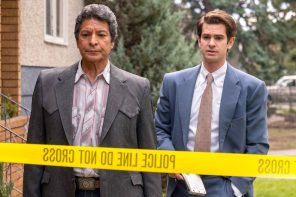As a companion to recent RD pieces “5 Ways the Internet Has Been Trying to Kill Religion” and “The Internet Is Not Killing Religion, Religion is Killing Religion,” see this long essay from the Huffington Post entitled “The Hook of Mormon” about online LDS proselytizing efforts. The results seem pretty glowing:
Whereas traditional Mormon missionaries convert, on average, six people during their 18- to 24-month service, the online apostles in Provo have averaged around 30 converts per missionary per year, says [BYU Professor Gideon] Burton. And these people stick around. Ninety-five percent of the Internet converts have kept active, a retention rate more than triple the norm….
The idea that a “self-selected cohort curious enough to reach out directly” yields better teaching contacts seems pretty logical, and if this produces better results for everyone involved, from the leaders of the church to missionaries to investigators, I’ll give it a cautious thumbs up.
My reservation is that I worry about the effects of this approach to missionary work on the missionaries. The article mentions that missionaries spend “11 hours a day, six days at a stretch” in front of a computer. Given that sitting is supposedly the new smoking, I see this as a very serious health threat for the 18- to 21-year-olds who constitute the bulk of the missionary force.
At least the more familiar approach, of walking up stairs in apartment buildings to knock on doors and of traveling to meetings and appointment by bike, provided good cardiovascular exercise. On my mission, I generally rode my bike at least ten to 15 hours a week.
Admittedly, the Referral Center Mission in Provo was created in part to “accommodate injured or disabled missionaries who’d have difficulty marching through neighborhoods”—Ryan Tucker, the missionary featured in the story, has muscular dystrophy. But even missionaries with limited mobility can benefit from a change of scenery and interactions with human beings they can see, hear and touch, and they also need opportunities to exercise in whatever ways they can. They shouldn’t be stuck in the same room eleven hours a day, six days a week, for two years.
I’ve written about how pleased I am that the church is acknowledging howfruitless tracting is and is therefore moving toward having missionaries domore service. I hope that missions move toward incorporating as wide a range of activities as possible.
I especially hope that a good chunk of time is dedicated specifically to study, or that missionaries are allowed to use some of their computer time to research the topics they’re expected to educate others on. We had a saying in my mission in Taiwan: “Missionaries who go to English-speaking missions come home spiritual giants; missionaries who go to Spanish-speaking missions come home fluent; and missionaries who go to Asian-speaking missions just come home.”
We never had enough study time. If you didn’t understand a gospel topic before you went on your mission, chances were slim that you would learn a lot more about it as a missionary, especially because we were extremely limited in the books we were allowed to read: officially permitted reading consisted of less than a dozen texts, including standard LDS scriptures. There was also the instruction to read the Book of Mormon every day, even if that meant neglecting the Old or New Testaments.
Given that men can now serve missions at age 18 and thus have less life experience, this is problem.




